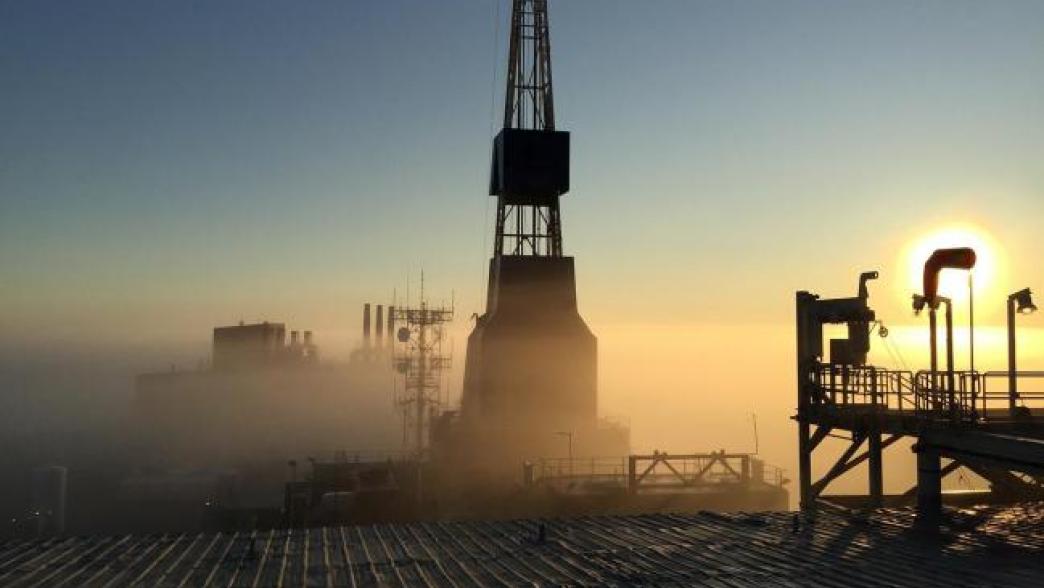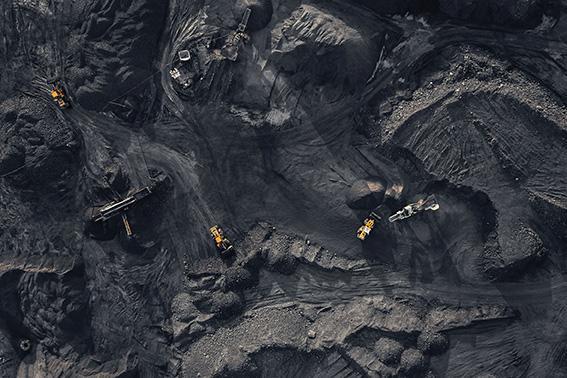
War in Ukraine: Strategic Challenges for Extractive Governance in Latin America
-
In the context of the war in Ukraine, the overall economic outlook for Latin America is poor. However, countries rich in natural resources will receive extraordinary income due to increased commodity prices.
-
High prices have led to decisions that could increase dependence on fossil fuels in the long term, including announcements of increases in production, new investments, and domestic fuel subsidies.
-
This situation could slow down domestic energy transition agendas, but the problems created by fossil fuel dependence could also be an opportunity to encourage investment in renewable energy.
-
Governments should use extraordinary profits made during this period to finance the energy transition and productive diversification.
-
Neither this nor any other situation justifies lowering governance standards in the extractive sector.
Introduction
This briefing analyzes the impact of the war in Ukraine on strategic prospects and governance challenges in the extractive sector in Latin America, focusing on the situation in Colombia, Mexico and Peru. The analysis leads us to question the enthusiasm that some actors in the region have shown regarding the potential profits from natural resource exports. These profits will be realized in a scenario characterized by lower growth prospects, more expensive credit, lower rates of foreign direct investment and higher inflation and fiscal pressure to subsidize fuel and food.
In this context, we discuss three strategic challenges for natural resource governance: the increased commitment to fossil fuels and the slowing prospects for the energy transition; the need to strategically plan for the use of the extraordinary income that natural resource exporters receive due to high price cycles; and the importance of strengthening governance systems to prevent weakening standards for regulating resource extraction.
Even before Russia’s invasion of Ukraine, the global economy was already facing the consequences of the health crisis caused by the coronavirus pandemic and bottlenecks in global supply chains. The war has further complicated international trade, exacerbating inflationary trends and the rise in commodity prices, particularly energy and food prices. Russia and Ukraine are major exporters of natural resources, including oil, gas, iron ore, nickel, aluminium, coal, grains, and fertilizers. According to the Secretary-General of the United Nations, Antonio Guterres, the war in Ukraine could trigger a “hurricane of hunger” and bring the global food system to collapse. The disruption of the supply chain will bring higher inflation and affect the recovery of the global economy. In addition to the humanitarian, economic and geopolitical impacts of the war, there are also potential environmental impacts, mainly related to climate change, as the war is changing the prospects for fossil fuel consumption and could further complicate the global energy transition.
Institutions such as Goldman Sachs and the International Monetary Fund (IMF) have indicated that the war in Ukraine will impact Latin America's economic performance: growth rates will be lower and interest and inflation rates will be increasingly higher across the region. The next few years will most likely bring financial instability and a decline in private investment. Despite potentially high revenues from higher commodity prices, higher energy and food costs could significantly weaken the prospects for these countries. Furthermore, the impact within countries will not be uniform. While some sectors, such as resource exporters, will benefit, others will be harmed, including possibly producers of food intended for local markets.
Extraordinary profits in an adverse economic context
The credit rating agency Fitch Ratings has revised forecasts for mineral and fossil fuel prices due to the situation in Ukraine. These generally show a short-term increase in prices, but a recovery of the original trends in the medium to long term. In the case of mining, prices of major metals and minerals will generally be higher than expected in 2022 and 2023. However, the projections remain unchanged for 2024 and the long term. In the case of copper, however, the long-term price forecast has been revised upward, as this metal plays an important role in global decarbonization strategies. The price forecast for thermal coal has increased through to 2025, but maintains its long-term downward trend, specifically because of the prospect of declining coal consumption due to associated high greenhouse gas emissions. For oil and gas, the same rating agency projects high prices between 2022 and 2024; thereafter the downward trend will be maintained.
In Latin America, the incomes of countries rich in natural resources will be boosted by the increased prices of the commodities they export. The dynamics vary depending on the type of resource. Thus, for example, copper producers like Chile and Peru will benefit from the long-term prospects for this mineral, even though production costs are also higher against a backdrop of inflation and high energy prices. In the case of Colombia, the main mining export is coal, the price of which is forecast to rise in the short term but fall in the medium to long term. This country will also benefit from high nickel prices. As for mining in Brazil, it is important to note that the country is a major exporter of iron ore, which is also experiencing an upward cycle.
Oil exporters are also expected to see an increase in revenues due to higher prices. These include countries like Brazil, Mexico, Colombia, Ecuador and Venezuela, in addition to Guyana’s significant export prospects. Despite the structural difficulties they face, state-owned oil enterprises in the region have got a new boost to their operations in the context of high prices.
In Mexico, according to the Brattle Group, additional income from crude oil exports at $100 per barrel amount to about $284 million per week. Most of this revenue is going to Pemex, which, as the most indebted oil company in the world, is forced to use this extraordinary income to improve its financial situation and reduce its debt.
In Peru, the state-owned company Petroperú is in the midst of an internal crisis that has led risk rating agencies such as Fitch and S&P Global Ratings to reduce its credit rating and elsewhere to talk of a potential bankruptcy of the company. Recently, however, there has been a change of leadership in the company and the Talara oil refinery has come into operation, which could give Petroperú new momentum. In the case of Colombia, Ecopetrol earned record profits in 2021. Projections for 2022 suggest that public and private investment in hydrocarbons will increase as production declines due to the lack of new discoveries of significant reserves, which in turn will lead to increased offshore exploration.
High fossil fuel prices also pose a challenge to domestic demand for fuels. The price increase mainly affects countries that are net importers of oil and fuels, like Peru, but also producer countries that tend to subsidize domestic consumption or grant tax exemptions, such as Mexico and Colombia.
In the case of Mexico, the government has granted tax incentives to petrol refiners and importers, which they can credit against other taxes for each liter sold. According to several Mexican analysts, tax exemptions and subsidies have historically exceeded estimated additional oil revenues when prices have been high. As Mexico is a net importer of fuel, one of the largest investments by the government of president Andrés Manuel López Obrador (AMLO) is the Dos Bocas refinery. The purpose of this refinery is to strengthen Mexico's energy security by allowing the country to refine oil domestically and avoid dependence on fuel imports.
As has become clear worldwide, domestic fuel prices are a very sensitive political issue. In Mexico, measures seek to protect the purchasing power of Mexican households in the political context of a presidential impeachment and elections in six states. In Colombia, a liberalization of petrol prices could have unforeseen social consequences given the recent social unrest and electoral situation in the country. In Peru, a truckers’ strike related to high fuel prices put the government of Pedro Castillo in a particularly precarious situation in early April this year. As a result, the Peruvian government decided to include several fuels, such as 90-octane petrol, diesel and bulk liquefied petroleum gas— in the Petroleum Derived Fuel Price Stabilisation Fund, in addition to exempting several basic foodstuffs from general sales tax.
New enthusiasm for increasing extraction
Against the backdrop of a bleak economic outlook, extracting natural resources once again seems to be the best option for countries that have historically been committed to this activity. This is a global phenomenon. In Africa, the war in Ukraine and the blockade of Russian gas have generated expectations that the continent could supply Europe with gas, although it is unrealistic to think that this will be feasible in the short term. Similar enthusiasm has built up in Latin America, either because of opportunities to profit from high prices or because of the resurgence of the energy security agenda, with announcements of new oil investments in countries such as Argentina and Ecuador.
In Colombia, the prospects for oil and coal, the country's two main exports, have been greeted with enthusiasm. As a result of the oil price increase caused by the war in Ukraine, the oil producers’ association is expecting the industry to be more dynamic, with greater investments in exploration and in the development of unconventional sources, such as fracking, and offshore investments, both of which have sparked resistance from various actors in Colombia. Furthermore, according to statements by President Iván Duque after a visit to the United States, Colombia intends to increase its production from approximately 800,000 to 1 million barrels of oil per day. Oil is Colombia's largest export and its contribution to the royalty system accounts for about one third of the total, therefore any increase in the international price has a profound impact on the country's political economy.
The sharp increase in the price of coal has also revived enthusiasm for the industry in Colombia and complicated discussions about the transition to coal in producing regions, which intensified when Prodeco announced the closure of its operations in Cesar. The change in the prospects for coal is directly related to the war in Ukraine, as some analysts say the blockade on Russian coal has reopened the doors for Colombian coal in the European Union. Coal could also replace part of Europe's gas consumption from Russia. This is a relatively quick and straightforward alternative, as countries like Germany have not completely cut back on their coal consumption and have even reopened coal plants as a result of the war. The new situation reverses the downward trend in coal, at least in the short term, giving a renewed impetus for Colombia’s coal industry.
In Mexico, the war has favored the mining companies already in operation, due to the strong performance of silver, copper and goal, among others. In the case of oil, the price increase is helping Pemex manage its debt, which does not necessarily mean an increase in production, but possibly a review of the decision to reduce exports. In December 2021, Pemex’s director stated that the company would reduce its exports in 2022 and stop exporting crude oil by 2023, given that the administration's objective is to achieve energy sovereignty. However, this promise is now being reconsidered due to the rise in oil prices and the additional income that will allow it to subsidize domestic fuel consumption. The energy and finance ministries are currently conducting a detailed analysis to determine if this will change.
In Peru, public debate in recent months has focused on inflation worries, particularly regarding energy and food prices. Peru exports various mining products, some of which are rising in price, including copper, silver, zinc, tin and iron. However, rising oil prices will hit the sector’s cost structure. In addition, there are the recurring social conflicts in various mines around the country, as for example in the southern mining corridor. The high level of conflict, combined with low business confidence in the Pedro Castillo government and institutional deterioration in the energy and mining sectors, have led to a slowdown in mining investment in the country. In view of this, according to Fitch Ratings, in a note picked up by Diario Gestión, the boards of foreign mining companies have not approved any new projects in Peru.
On the other hand, testing of the new Talara refinery began on 12 April this year and officials expect it to be fully operational by the end of 2022. As a precaution, the Peruvian government has not promised any price cuts as a result of the new refinery, although it is offering more competitive prices to the wholesale market and cleaner fuels to the local market.
In the context of the war in Ukraine and related energy security challenges, the Peruvian government has stated its intention to increase oil production through state-owned Petroperú, mainly in the country’s Amazon region. Petroperú plans to participate in oil extraction at Lot 192, the largest in the country, but also the one that has suffered the greatest number of spills. This situation has led to a long history of conflicts with indigenous peoples in the Amazon department of Loreto and along the northern Peruvian pipeline that transports extracted oil to the Talara refinery on the country's northern coast. Furthermore, the state oil company plans to become a partner in a series of lots which, in principle, would be returned to Petroperú in the coming years when their contracts expire. However, this is generating resistance and conflicts with the private sector, which are also being voiced in the country’s parliament. Added to this new push for oil is the government’s political decision to spread the use of Camisea gas across the country, which would also involve increasing natural gas reserves, in this case from the Amazon region of Cusco.
Strategic challenges for the governance of natural resources
The disruption caused by the war is influencing pre-existing political dynamics and governance challenges in each country. At the regional level, the problems that Latin America already faces in terms of natural resource governance, such as the reprimarization of exports, problems with corporate management in state-owned oil companies, little progress in domestic energy transition and high levels of conflict related to extractive activities, are exacerbated by high prices and the resulting pressure to deepen the extractive agenda.
Although the scenarios of the countries analyzed vary, they all have in common an increased commitment to fossil fuels. This is true for Colombia, Mexico, Peru and many other countries in the region and the world. It is important to note, however, that these short-term price prospects do not determine the companies' long-term strategies. There is evidence that high prices encourage national oil companies to make risky bets in terms of new investments that may not be viable in the future of the global energy transition. The enthusiasm for fossil fuels comes at a time when scientists and activists are calling more strongly for the need to drastically reduce greenhouse gas emissions.
The message is clear: unless immediate and radical action is taken, we will not hit the target of reducing global warming to 1.5°C. And while fossil fuel consumption will not stop overnight, global criteria to allow developing countries to have priority in extraction must be discussed, but without encouraging new exploration projects. The Secretary-General of the United Nations, Antonio Guterres has pointed out that the obsession with obtaining oil in the short term may increase dependence in the long term and could also lead to failure to meet climate goals. Regarding the support given to coal consumption by G20 countries in the context of the war, Guterres has said that “Their support for coal not only could cost the world its climate goals. It’s a stupid investment”.
The renewed push for fossil fuels is linked to price increases, which, as we have seen, are a short-term factor, and to concerns about energy security. Governments need to consider the medium- and long-term prospects when making decisions. In the long term, we can expect a decrease in fossil fuel consumption and an increase in the renewable energy market. This is due to climate considerations, but also issues of oil price volatility, bottlenecks in the fossil fuel supply chain and the association of oil with authoritarian and kleptocratic regimes.
Energy prices have also risen. Again, this is a short-term dynamic, as renewable energy are already a cheaper economic option than fossil fuels, and the long-term trend is that the transition to renewables will result in government savings. In the case of Latin America, progress on renewables varies between countries, but it is clear that active policies and the development of clear regulatory frameworks are required to promote these energy sources. The transition to renewables also presents opportunities for investment in new technologies. The deepening of the fossil fuel consumption agenda is slowing down the progress of renewable energy in the region.
In this context, how to take advantage of the extraordinary resources that high prices for non-renewable resources bring is an important topic for public discussion. As we have seen, economic prospects are generally poor and many of these resources go towards stabilizing fuel prices domestically. Insisting on investments that increase dependence on fossil fuels, as is the case in Mexico, Colombia and Peru, under different formulas and conditions, is not a sustainable strategy in the medium and long term. Instead, windfall profits should be used to finance energy transition strategies and productive diversification.
Finally, given the high prices, pressures are increasing to expand the extractive frontier. Examples include pressure to develop mining projects in indigenous territories in Brazil, offshore oil projects and fracking in Colombia and the agenda to increase gas reserves in the Peruvian Amazon. From the perspective of extractive promoters, it is always a good time to make things easier for the functioning of the sector: when prices are low there is a need to avoid losses; when prices are high, there is a need to ensure profits. No situation justifies lowering environmental, social and governance standards for the extractive sector.
The authors are grateful for comments from Antonio Hill and Andrea Furnaro (NRGI) on an earlier version of this document. Likewise, the members of the Platform for a Sustainable Reactivation in Peru and Colombia and Sergio Guzmán from Colombia Risk Analysis, who took part in the discussion following a presentation on this topic in Bogotá in March 2022.
Authors

Juan Luis Dammert
Latin America Director

Fernanda Ballesteros
Mexico Country Manager

Anna Cartagena
Communications Officer, Latin America

Ana Carolina González Espinosa
Senior Director for Programs

Juliana Peña Niño
Latin America Senior Officer

Fernando Patzy
Andean Manager

